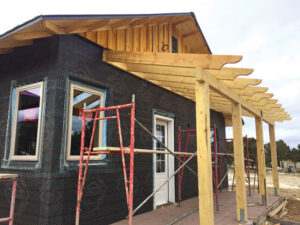By Mike Rosso
In the last issue, we ran a theme of “snow” in the hopes it might help to bring about some of the white stuff to the neighborhood.
Well, it worked. As I write this, there are at least 4-5 fresh inches outside the window, and that’s coming on top of three other snow storms we’ve had since 2019’s debut. It even snowed in Phoenix and Las Vegas the past few days. This is great news for Colorado’s snowpack (see page 12), and the ski areas are reaping the benefits. But we should not let all this precipitation fool us into believing we are out of the woods as far as climate change goes. As mentioned last month, the Earth is still warming at an alarming rate, more species are becoming extinct and the world population continues to grow unabated.
I’ve been watching a BBC documentary series, World’s Busiest Cities, which details the issues facing Mexico City, Moscow, Delhi and Hong Kong, and it is eye-opening, especially to someone who’s been living in a remote mountain town of 5,500. The combined population of the aforementioned cities is nearly 60 million people and growing fast. For comparison, Colorado’s population in 2017 was 5.6 million, with most located in the Denver metro area, about 2.9 million.
While on my January break, I visited my family in the San Francisco Bay Area, with a population of over 7 million people in nine counties and 101 cities. I got to enjoy an Amtrak trip from Oakland to Eugene, Oregon, and flew out of Portland, who’s metro area population is 2.4 million, with an overnight in Denver.
Visiting these urban areas reminds me that we here in Central Colorado are the exception to the rule. More and more humans are migrating to cities worldwide, although many of Colorado’s smaller towns and cities are growing due to urban flight. Many in Denver are cashing in on a booming real estate market and relocating to the mountains, especially retirees.
Two signs of the times here in Chaffee County are a controversial 502-acre, 133-lot subdivision proposed near Nathrop, the Centerville Ranch. The proposal calls for each lot to have a well and septic, and creates what many consider a small town in the middle of agricultural land and incompatible with its surroundings. Another sign is the new townhouses being marketed on East Sackett Street in Salida, starting at $1.5 million. Needless to say, these are not designed for locals.
Bottom line is; there are more and more of us occupying the planet and we’ve got to live somewhere. I’m hoping that we have the foresight to make good choices about how we want to grow our communities. Do we want car-driven sprawl? Infill growth? We hope to tackle these topics as we move into these challenging times.

